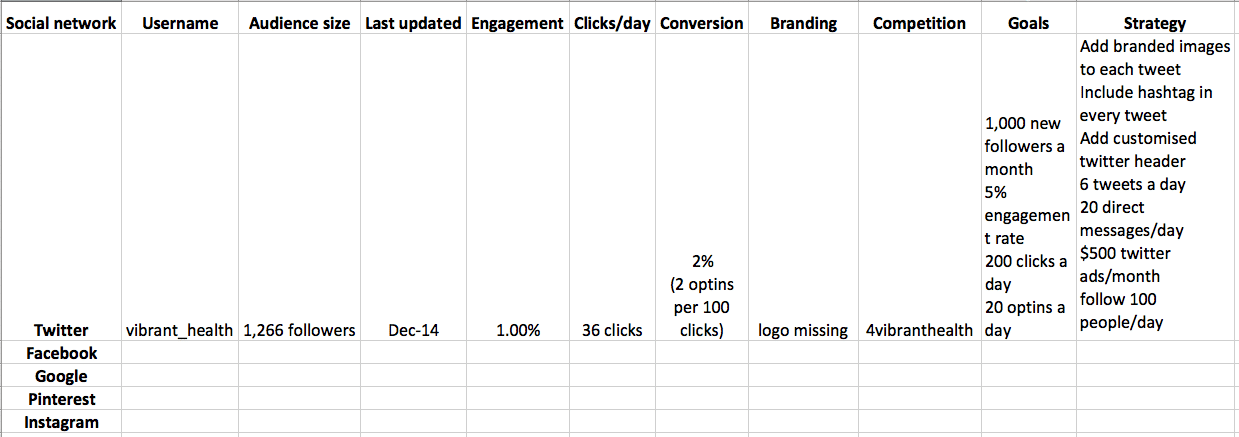Benjamin Franklin’s famous statement “If you fail to plan, you are planning to fail” rings true in many circumstances, and especially when it comes to social media marketing.
Carefully putting together a social media plan could be the difference between getting no results or accidental results at best and actually experiencing an increase in business with real evidence behind it.
A social media plan is simply the summary of everything you plan to do and achieve for your business using social networks. In fact, a social media plan is the most important aspect of social media marketing and 50% of time should be spent on putting it together and only 20% of time should be allocated to executing the plan and then 30% of the time should be spent monitoring and analyzing results.
Check out the social media planner business deck here which contains everything a business needs to get started in developing its social media strategy.
Unfortunately, only a very small percentage of business owners have a strategically crafted social media plan and therefore social media marketing ends up being a waste of time rather than a powerful marketing channel.
Check out the social media planner business deck here which contains everything a business needs to get started in developing its social media strategy.
In order to put together a social media plan, it is important to follow the steps below:
Step 1: Audit your accounts
Before even thinking about what you would like to achieve thanks to social networks, it is important to know where you are at on social media. In other words, identify how many social media networks you have joined to market your business, make sure the usernames for each account is the same across all social networks so there is a certain level of consistency, identify how large or small your audience is for each account, notice the level of engagement on each, check when they were last updated and if the branding is congruent across all social networks and up-to-date.
Once you have gathered all the information above, it is important to know how behind or ahead you are of your competition on social media, which leads us to step 2.
Step 2: Identify your competition
Another benefit of social media is its transparency: the ability to know at all times what your competitors are up to. By simply looking at their profiles on social media and where they are at in terms of engagement and audience size as well as seeing what is working for them or not, you then have a clear road map of what you should be focusing on and what the easiest and fastest ways are to achieve your goals.
The social media plan template below will allow you to extract the necessary information you need in order to craft your social media plan.
Following the social media plan example above will give you clear direction and underline the gaps in your existing social media marketing efforts.
Check out the social media planner business deck here which contains everything a business needs to get started in developing its social media strategy.
Step 3: Set goals
As mentioned in the social media plan template above, goals are a very important part of any social media plan and will shape the strategy you will follow.
Goals can vary from business to business depending on how competition is performing and what the business needs to achieve to turn social media into an important marketing channel. Goals can be any of the following;
• Increase audience size
• Double conversion rate
• Increase traffic (number of clicks to website)
• Increase engagement rate (number of comments, shares and likes for every post)
• Etc…
Step 4: Create a content plan
Once goals have been set, the next step is to reverse engineer how much content and what type of content needs to be published and when, in order to achieve these goals. A content plan should include the frequency of posts, the types of posts (video, text, infographic, etc…) the hashtags to be used, the links to promote, the timing of each post as well as the person responsible for executing the plan.
Step 5: Track
The last step of a strategic social media plan is tracking. Depending on your goals, there are a variety of tools you can use to track your progress. For example, if your main goal is to increase the number of clicks to your website from Twitter, you can use clickmeter.com as a tool to monitor clicks generated from Twitter in general, or from individual tweets. Should your goal be to increase the size of your audience on Facebook, using “Facebook insights” will help you monitor your progress. There are of course many social media tracking tools that are very effective such as buffer.com or sproutsocial.com
Remember, a social media plan is never set in stone and evolves as your business goals change and should be adapted based on the results generated.
Make sure to follow the social media plan example above and review it on a monthly basis based on your progress and results.
To find out more about social media marketing and discover more social media tips, make sure to watch the video above.
If you’ve enjoyed this post, remember to share it, like it and feel free to leave a comment below.
About the Author

Corinna Essa is known internationally as the go-to person when it comes to social media marketing.
Corinna owns a social media marketing company helping businesses around the world leverage the power of social media without doing any of the legwork. Her company has been featured in many media outlets including Sky Business news, Working Women magazine, Ymagazine, Tasmanian Times, Channel 7 and 101fm.
Corinna is also the author of 2 bestselling books “Money On Demand – The 16 Fastest Ways to Becoming a Millionaire Online” and “Reach: The SECRETS to converting your social media audience into your network marketing downline fast”





Recent Comments